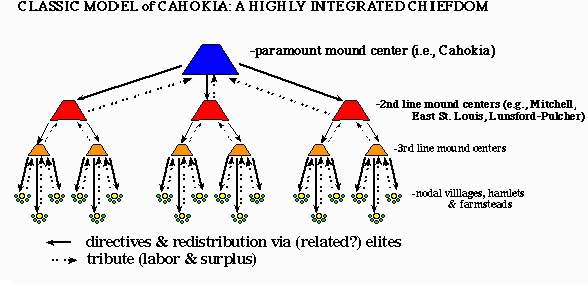Thus, when assembled in this manner, the archaeological data seem to indicate that the rural population in farmsteads, hamlets, villages, and mound-towns were tied to the Cahokia elite through political and religious obligations exemplified by tribute and obedience. Religious and socio-political needs to the hamlets and farmsteads were fulfilled by the nodal settlements, villages, and towns . Accordingly, the second and third line mound centers (in villages and towns) harnessed the food surplus, labor, and obedience of their surrounding farmsteads and hamlets, availing these surpluses for use by the Cahokia elite.

[Previous] [Next] [Up] [Top]
